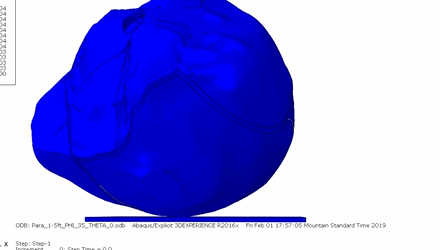Abstract:
Infant skull fractures are common in both accidental and abusive head trauma, but identifying the cause of injury may be challenging without adequate evidence. To better understand the mechanics of infant skull fracture and identify environmental variables that lead to certain skull fracture patterns, we developed an innovative computational framework that utilizes linear elastic fracture mechanics theory to predict skull fracture as a first step to study this problem. The finite-element method and adaptive-remeshing technique were employed to simulate high-fidelity, geometrically explicit crack propagation in an infant skull following impact. In the framework, three modes of stress intensity factors are calculated by means of the M-integral using the commercial analysis code, FRANC3D, and are used as measures of crack driving force. The anisotropy of infant skulls is represented by means of a transversely isotropic constitutive model and a direction-dependent fracture-toughness locus. The ability of the framework to predict impact-induced fracture patterns is validated by comparison with experimentally observed fracture patterns from the literature.
Authors: Junyan (Jimmy) He, Jiawei Yan, Susan Margulies, Brittany Coats, Ashley Spear
This work supported by Award No. 2016-DN-BX-0160, awarded by the National Institute of Justice, Office of Justice Programs, US Department of Justice. The opinions, findings, and conclusions or recommendations expressed in this publication, program, exhibition are those of the authors and do not necessarily reflect those of the Department of Justice
Access article: 2020_He_BMMB

